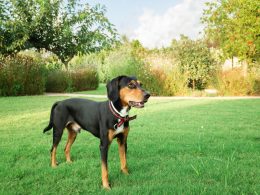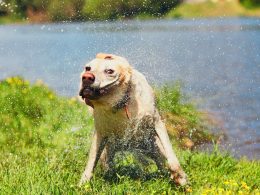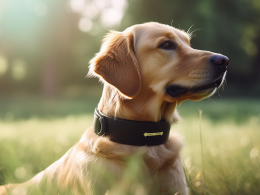Ensuring a balance between your pets, particularly regarding their dietary habits, is a key aspect of responsible pet ownership. One common challenge for many households with cats and dogs is keeping the dog out of the cat food. This dilemma arises due to the inherent differences in these two companions dietary needs and behaviors. While food for cats is formulated to meet the specific nutritional requirements of felines its irresistibly rich aroma and taste often tempt dogs to indulge leading to potential health complications and conflicts between pets.
By managing their feeding routines and environment you can promote a harmonious coexistence between your cat and dog fostering a happier and healthier life for both furry creatures.
How To Prevent A Dog From Getting Into The Cat Food?
Preventing your dog from accessing cat food requires strategic planning and consistent implementation. Here are some practical methods to help you keep your dog out of the food for cats:
Elevate the Cat Food: Placing the food in an elevated location your dog can’t reach effectively deter them from sneaking a snack. Consider using shelves countertops or specialized cat trees to create a designated feeding area for your cat that is inaccessible to your dog.
Use Baby Gates: Installing baby or pet gates can create physical barriers that prevent your dog from accessing the area where the food for cat is kept. Choose gates with secure latches and height appropriate for your dog’s size to ensure effectiveness.
Feed at Scheduled Times: Establishing set feeding times for your cat and dog can help minimize the opportunity for your dog to steal food for the cat. By feeding your pets at specific times throughout the day you can monitor their meals and prevent unsupervised access to each other’s food.
Train Your Dog: Use positive reinforcement techniques to teach your dog to avoid cat food. Rewarding your dog for ignoring the food for the cat and redirecting their attention to their food can help reinforce desired behavior. Consistency and patience are key to successful training outcomes.
Monitor Feeding Times: Keep a close eye on your pets during feeding times to ensure they’re eating their designated food and not attempting to sneak into each other’s bowls. Supervision allows you to intervene promptly if your dog shows interest in the food for the cat and reinforces the importance of sticking to their meals.
Invest in Pet Specific Feeders: Consider using automatic feeders programmed to open only for your cat’s microchip or collar tag. These specialized feeders utilize technology to ensure that only the designated pet can access the food keeping food for the cat out of reach for your dog.
Create Separate Feeding Areas: Designate separate feeding areas for your cat and dog to minimize the chance of food theft or conflicts. Place their food bowls in different rooms or corners of your home ensuring that each pet has their own space to enjoy their meals without interference from the other.
Consult a Veterinarian: If you’re struggling to manage your pets feeding habits or experiencing challenges in preventing your dog from accessing food for your cat don’t hesitate to seek advice from a qualified veterinarian. Your vet can offer personalized recommendations and solutions tailored to your pet’s needs and circumstances.
Consider Puzzle Feeders: Introduce puzzle feeders or interactive toys for your cat and dog to provide mental stimulation during mealtime. These engaging devices encourage natural foraging behaviors but also help distract your dog from attempting to access the food for the cat while keeping them entertained.
Maintain Consistent Routines: Establishing and maintaining consistent feeding routines for your pets is essential for reinforcing desired behaviors and minimizing opportunities for food theft. Stick to regular mealtimes and avoid leaving food out for extended periods which can tempt your dog to sneak into the food for the cat when you’re not around.
Nutritional Balance!
By implementing the strategies you can effectively address this common challenge while ensuring each pet receives the nutrition they need to thrive. From elevating cat food dishes to using barriers and employing positive reinforcement training you can take various approaches to prevent your dog from accessing food for cats.
Remember consistency and patience are key when implementing these strategies. Your pets may need time to adjust to the new feeding routines and boundaries. Still, the effort invested will ultimately pay off in reduced conflicts and improved overall well being for your furry friends. Additionally, continue exploring resources and tips available through platforms like Pets With Me further to enhance your understanding of pet care and behavior.
Frequently Asked Questions:
-
Why does my dog keep getting into the cat food?
Dogs are naturally curious and opportunistic when it comes to food. The smell and taste of food may entice cats, leading to repeated attempts to access it.
-
Is it harmful for my dog to eat food destined for cats?
While an occasional nibble of food for a cat may not harm your dog, a steady diet can lead to nutritional imbalances. Food for cats is formulated differently to meet the unique dietary needs of cats, so it lacks some essential nutrients that dogs require.
-
How can I prevent my dog from reaching the cat’s food bowl?
Answer: Place the cat’s food bowl in an area that is inaccessible to your dog, such as on a high shelf or behind a baby gate with a small opening that only the cat can fit through. You can also feed your cat in a separate room your dog can’t access.














